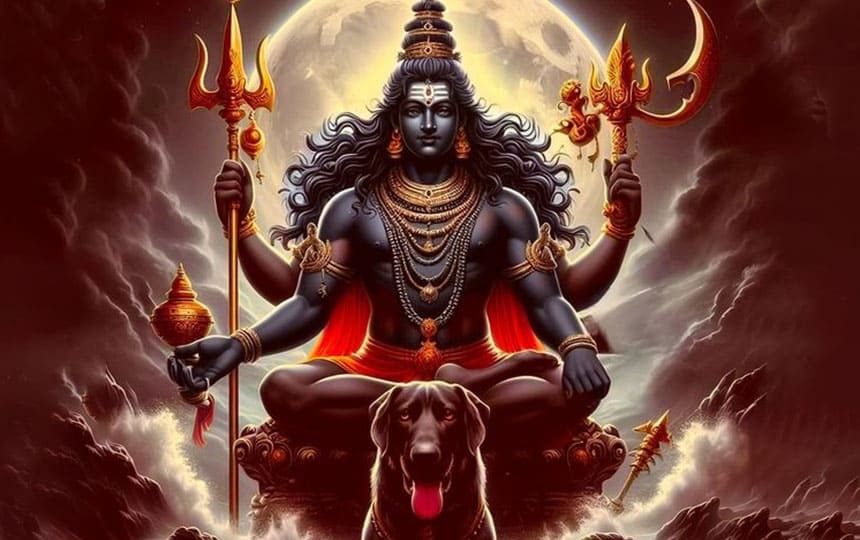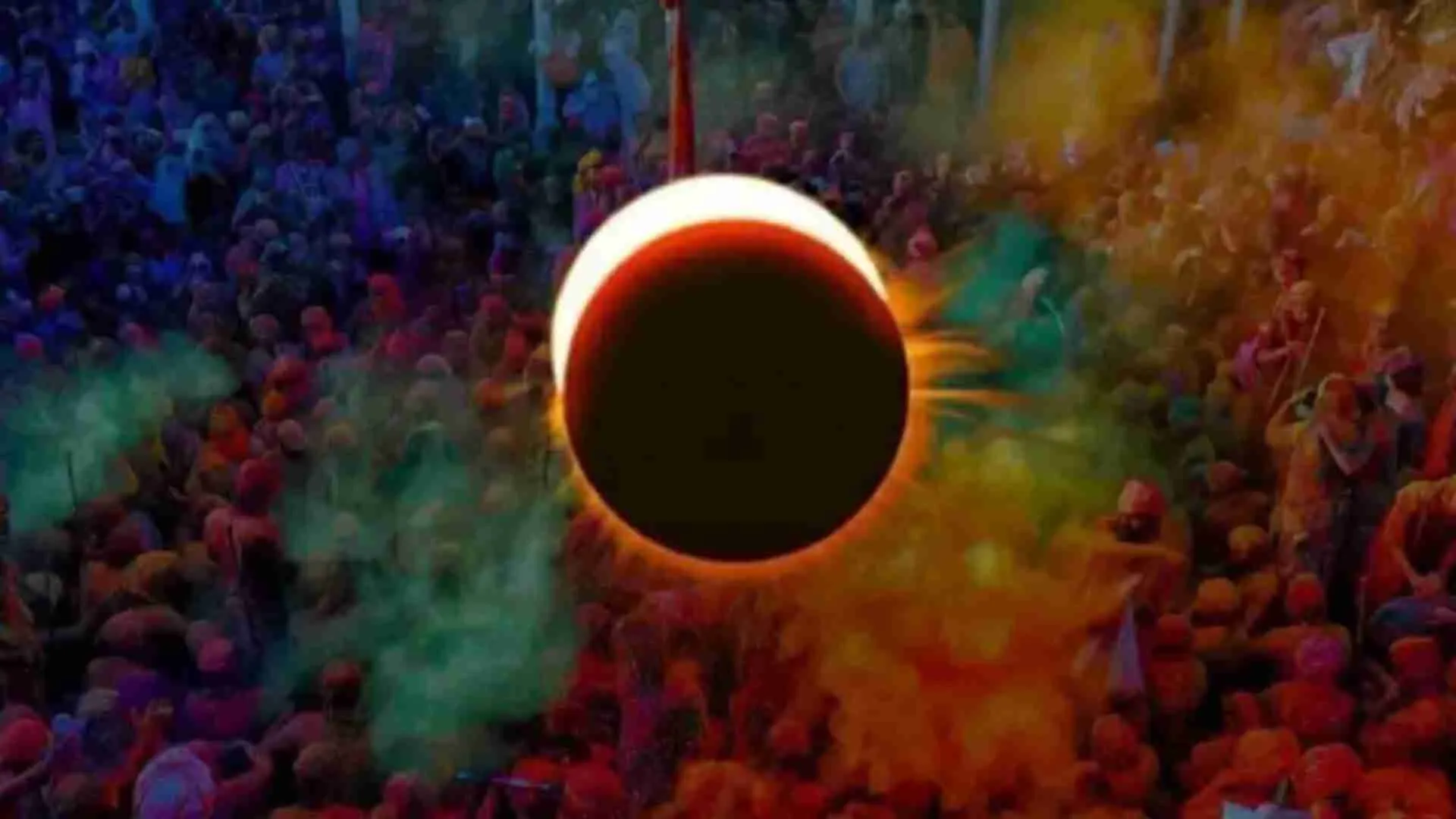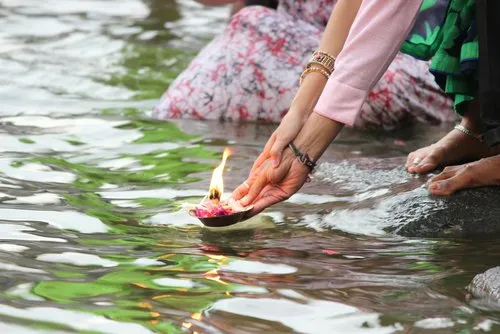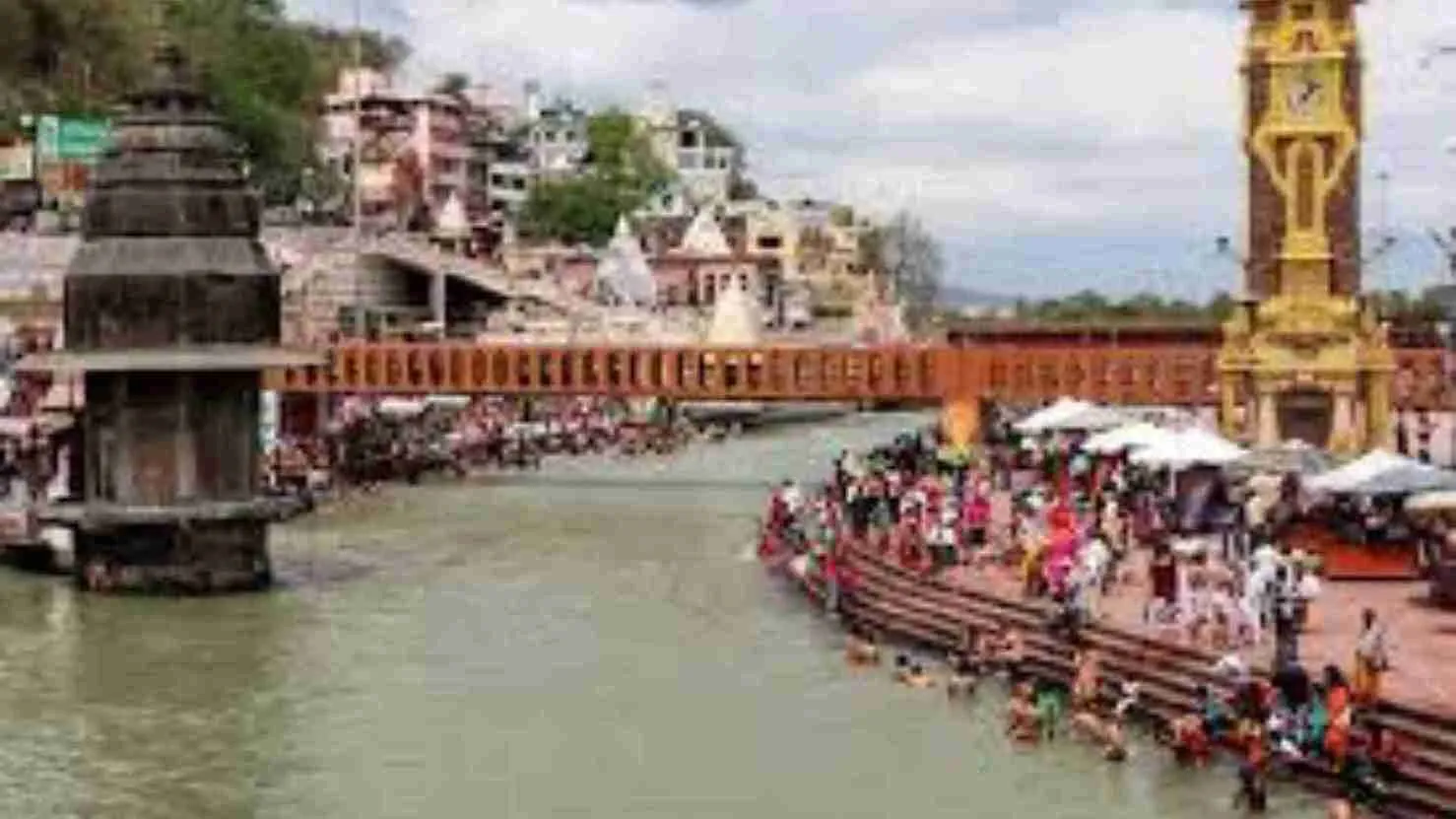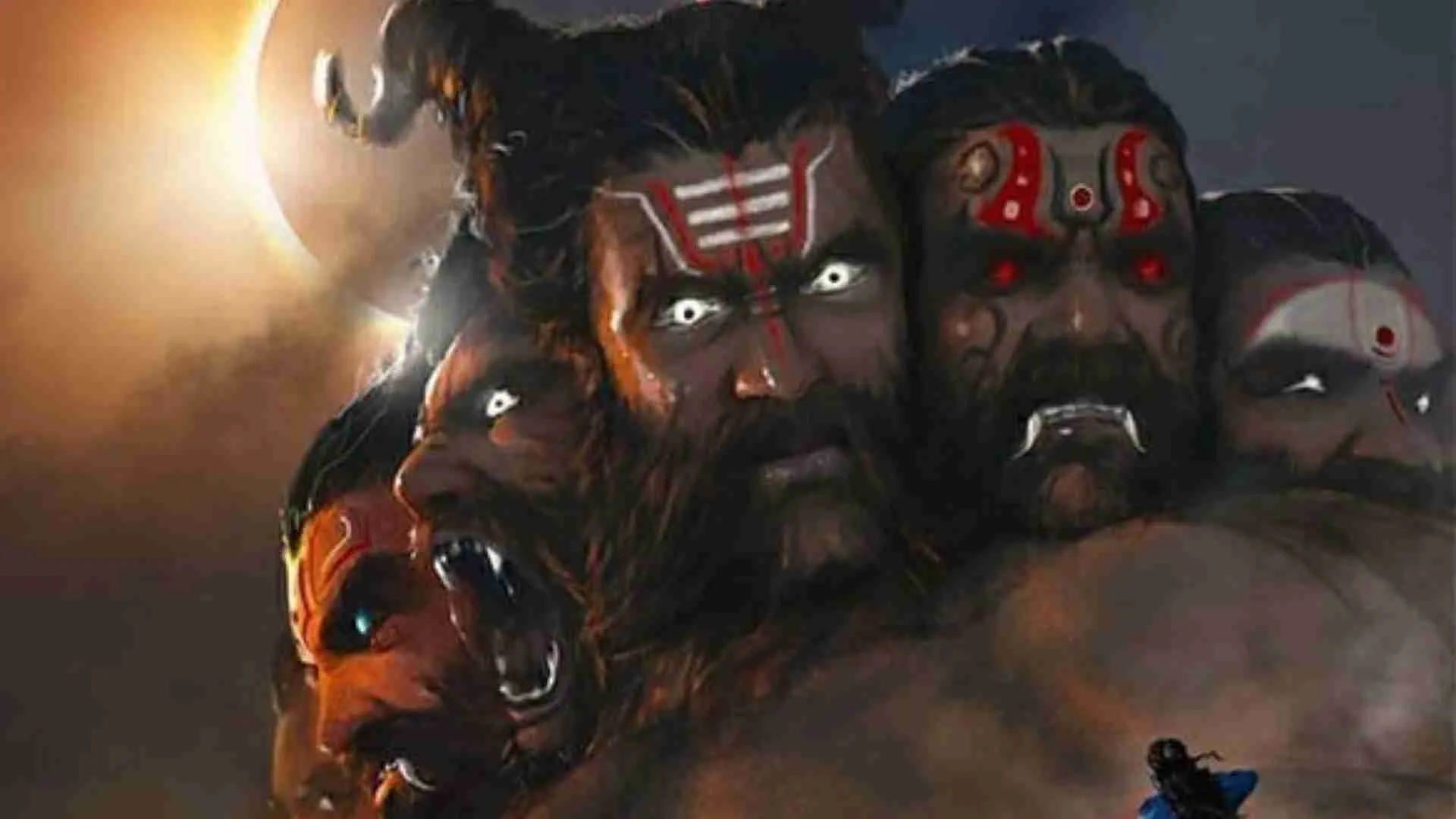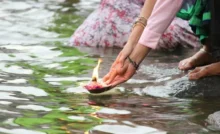According to the beliefs of Hinduism, every year, Kaal Bhairav Jayanti is celebrated on the Ashtami Tithi of Krishna Paksha of Margashirsha month. In this month, Shiva took his fierce avatar which is celebrated as Kaal Bhairav. Although the Ashtami day of Krishna Paksha of every month is dedicated to Kaal Bhairav. It is also known as Kalashtami, but the occasion of Jayanti is celebrated on the Ashtami Tithi of Margashirsha month. It is said that whoever worships Kaal Bhairav, the fierce form of Shiva with a true heart on this day, Baba Kaal Bhairav takes away all his troubles and problems and protects him every moment. He protects his devotees from the fiercest enemies. Bhairavnath is considered to be the fifth incarnation of Shiva. From the point of view of worship, he is a very benevolent deity. Kaal Bhairav is the deity of Tantra, it is believed that whoever worships him is not affected by evil eye or tantric rituals. On this day, if any kind of negative energy resides on a person or in his house, then by taking some special measures on this day, one can get rid of it. According to ‘Shiv Puran’, Bhairav was born from the part of Lord Shankar in the afternoon on the Ashtami of Krishna Paksha of Margashirsha month. According to religious texts, Kaal Bhairav is considered to be a form of Lord Shiva, who was born from the anger of Lord Shiva. Kaal Bhairav has a stick in one hand and his vehicle is a black dog.
Mythological story of Kaal Bhairav Ji
According to a popular story, it is said that Lord Shankar destroyed the ego of Brahma on this Ashtami day. Bhairavnath is believed to be born from his blood. Therefore, this day is celebrated as Bhairav Ashtami Vrat. It is said that when the world began, Brahma, the creator of the universe, once said some derogatory words to Lord Shiva after seeing the attire of Lord Shiva and the appearance of his followers. Shiva himself did not pay any attention to this, but at the same time a fierce body trembling with anger and holding a huge stick appeared from his body. Angry, he came forward to attack Brahma. When Brahma saw this, he became frightened. After apologizing to Shankar Ji, his incarnated body could calm down only after Shankar Ji’s mediation.
Lord Bhairav is a Hindu deity who is revered and popular for many reasons:
1. Protector and Destroyer: Lord Bhairav is considered to be an incarnation of Lord Shiva and is called the “destroyer of evil”. It is believed that he has the power to protect his devotees from negative forces and destroy any obstacle in their lives.
2 . Tantric Connection: Bhairava has a deep connection with Tantric practices and is seen as a powerful Tantric deity. Many Tantric rituals and practices are dedicated to invoking the blessings and energy of Lord Bhairava.
3. Fierce Form of Shiva: Bhairava represents the fiercer and powerful form of Lord Shiva. He is often depicted with a fearsome face, multiple arms and various weapons, symbolizing his ability to defeat evil.
4. Protector of Kashi: Lord Bhairava is considered the primary guardian deity of the holy city of Kashi (Varanasi). He is believed to protect the city and its residents from any harm or misfortune.
5. Wish Fulfiller: Devotees believe that sincere prayers and offerings to Lord Bhairava can help them fulfill their wishes and overcome their problems. He is seen as a benevolent deity who bestows his blessings on his loyal followers.
6. Purification and Spiritual Transformation: The worship and rituals of Lord Bhairava help in spiritual purification and transformation. He is invoked to overcome negative tendencies and achieve higher levels of consciousness.
Spiritual Significance in Hinduism
Kaal Bhairav Jayanti holds deep spiritual significance in Hinduism, symbolizing the fierce manifestation of Lord Shiva. It is a day dedicated to honoring Kala Bhairava, the Lord of Time, and his role in the cosmic cycle of creation and destruction. The festival is deeply connected to the concepts of time, righteousness, and protection.
Time (Kaal): Kala Bhairava is considered the Lord of Time, who emphasizes the impermanence of life and the importance of living virtuously.
Righteousness (Dharma): Devotees seek blessings to lead a life in accordance with Dharma, or righteousness.
Protection: Kala Bhairava is worshiped as a protector, his followers seek protection from misfortune and the evil effects of evil spirits.”
The festival is expected to fall in the month of November, after the auspicious occasions of Diwali and Chhath Puja. The exact date is determined by the traditional Hindu lunar calendar, which considers the positions of celestial bodies to mark religious events. Lunar phase: The waning phase of the moon (Krishna Paksha) Auspicious time: Midnight, when Kala Bhairava is believed to have appeared This period is also marked by several other important astrological events, such as solar and lunar eclipses, which affect the energy and spiritual practices of devotees. Preparations for the festival involve not only understanding its date and time, but also aligning oneself with cosmic rhythms to enhance spiritual benefits.”
Lord Bhairava is a Hindu deity who is revered and popular for several reasons:
1. Protector and Destroyer: Lord Bhairava is considered an incarnation of Lord Shiva and is called the “Destroyer of Evil”. He is believed to have the power to protect his devotees from negative forces and destroy any obstacles in their lives.
2. Tantric Connection: Bhairava has a deep connection with Tantric practices and is seen as a powerful Tantric deity. Many Tantric rituals and practices are dedicated to invoking the blessings and energy of Lord Bhairava.
3. Fierce Form of Shiva: Bhairava represents a fiercer and powerful form of Lord Shiva. He is often depicted with a fearsome face, multiple arms, and various weapons, symbolizing his ability to defeat evil.
4. Protector of Kashi: Lord Bhairava is considered to be the primary patron deity of the holy city of Kashi (Varanasi). He is believed to protect the city and its residents from any harm or misfortune.
5. Wish Fulfiler: Devotees believe that sincere prayers and offerings to Lord Bhairava can help them fulfil their wishes and overcome their problems. He is seen as a benevolent deity who bestows his blessings on his loyal followers.
6 . Purification and Spiritual Transformation: The worship and rituals of Lord Bhairava help in spiritual purification and transformation. He is invoked to overcome negative tendencies and achieve higher levels of consciousness.
The festival is expected to fall in the month of November, after the auspicious occasions of Diwali and Chhath Puja. The exact date is determined by the traditional Hindu lunar calendar, which considers the positions of celestial bodies to mark religious events. Lunar phase: The waning phase of the moon (Krishna Paksha) Auspicious time: Midnight, when Kala Bhairava is believed to have appeared This period is also marked by several other important astrological events, such as solar and lunar eclipses, which affect the energy and spiritual practices of devotees. Preparations for the festival involve not only understanding its date and time, but also aligning oneself with the cosmic rhythms to enhance spiritual benefits.”
1. If a person has the wrath of the planets Rahu and Saturn in his horoscope, he must worship Kala Bhairava. Kaal Bhairav is the fierce incarnation of Lord Shiva, therefore worshipping Shivlinga on the day of Kaal Bhairav Ashtami is considered extremely auspicious.
2. On this day, writing Om Namah Shivaya on 21 Belpatra leaves and offering them to the Shivlinga pleases Lord Kaal Bhairav.
3. Lighting a mustard oil lamp in the Shami plant in the evening on the day of Kaal Bhairav Ashtami increases love among all the members of the family.
4. According to religious beliefs, the dog is considered to be the vehicle of Lord Kaal Bhairav, therefore, on the auspicious occasion of Kaal Bhairav Jayanti, food should be given to a black dog.
5. On the day of Bhairav Jayanti, go to the Kaal Bhairav temple and offer mustard oil and vermilion to the Lord.
6. On the day of Kaal Bhairav Ashtami, after waking up in the morning and taking a bath, worship Lord Kaal Bhairav with full rituals. By doing this, Lord Kaal Bhairav is pleased and always protects his devotees.
7. Lord Kaal Bhairav is also called the Kotwal of Kashi. No person can enter Kashi without his permission.
Spiritual Significance in Hinduism
Kaal Bhairav Jayanti holds deep spiritual significance in Hinduism, symbolising the fierce manifestation of Lord Shiva. It is a day dedicated to honouring Kala Bhairava, the God of Time, and his role in the cosmic cycle of creation and destruction. The festival is deeply connected to the concepts of time, righteousness and protection.
Time (Kala): Kala Bhairava is considered the Lord of Time, who emphasizes the impermanence of life and the importance of living virtuously.
Righteousness (Dharma): Devotees seek blessings to live a life in accordance with Dharma, or righteousness.
Protection: Kala Bhairava is worshiped as a protector, his followers seeking protection from misfortune and the evil effects of evil spirits.”


